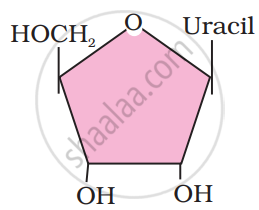Advertisements
Advertisements
Question
It is said that elemental composition of living organisms and that of inanimate objects (like earth’s crust) are similar in the sense that all the major elements are present in both. Then what would be the difference between these two groups? Choose a correct answer from among the following:
Options
Living organisms have more gold in them than inanimate objects
Living organisms have more water in their body than inanimate objects
Living organisms have more carbon, oxygen and hydrogen per unit mass than inanimate objects
Living organisms have more calcium in them than inanimate objects
Solution
Living organisms have more carbon, oxygen and hydrogen per unit mass than inanimate objects
Explanation:
| Element | % Weight of | |
| Earth’s Crust | Human Body | |
| Hydrogen (H) | 0.14 | 0.5 |
| Carbon (C) | 0.03 | 18.5 |
| Oxygen(0) | 46.6 | 65.0 |
| Nitrogen (N) | very little | 3.3 |
| Sulphur (S) | 0.03 | 0.3 |
| Sodium (Na) | 2.8 | 0.2 |
| Calcium (Ca) | 3.6 | 1.5 |
| Magnesium (Mg) | 2.1 | 0.1 |
| Silicon (Si) | 27.7 | negligible |
APPEARS IN
RELATED QUESTIONS
Explain the composition of triglyceride.
Draw the structure of the amino acid, alanine.
The acid insoluble fraction does not contain
Triglyceride consists of ______.
Identify the structural formula given in the figure.

Many elements are found in living organisms either free or in the form of compounds. Which of the following is not found in living organisms?
An aminoacid under certain conditions have both positive and negative charges simultaneously in the same molecule. Such a form of aminoacid is called ______.
Write the name of anyone aminoacid, sugar, nucleotide and fatty acid.
Glycine and Alanine are different with respect to one substituent on the α-carbon. What are the other common substituent groups?
What is the difference between a nucleotide and nucleoside? Give two examples of each with their structure.
